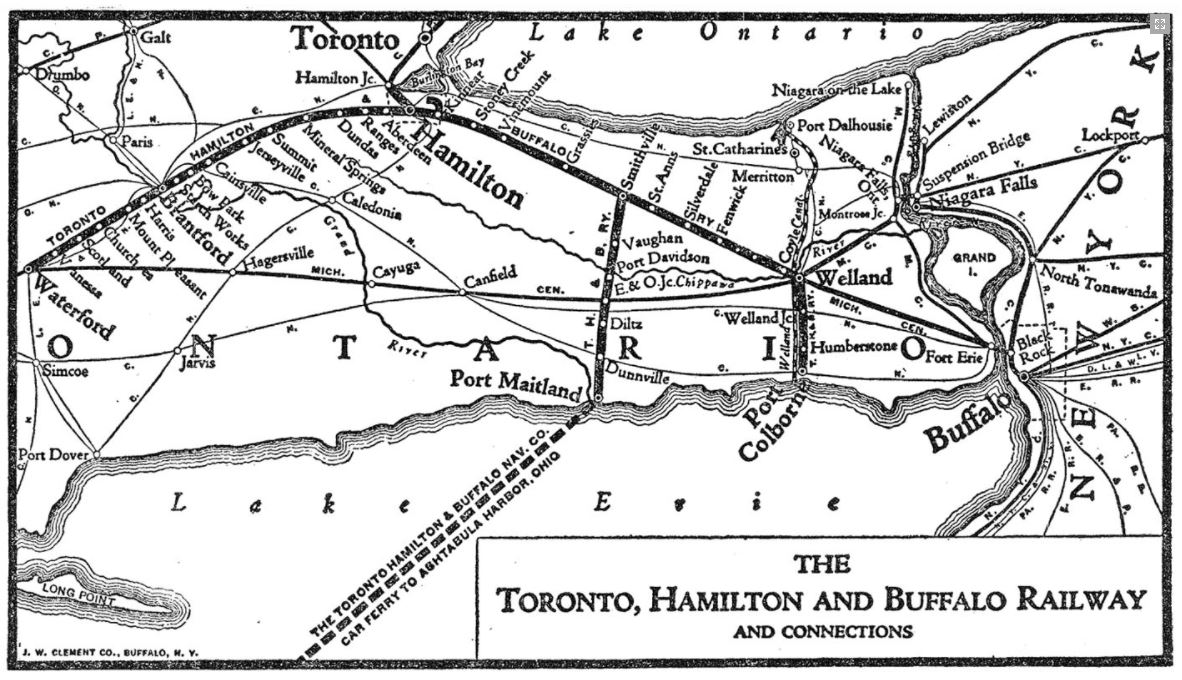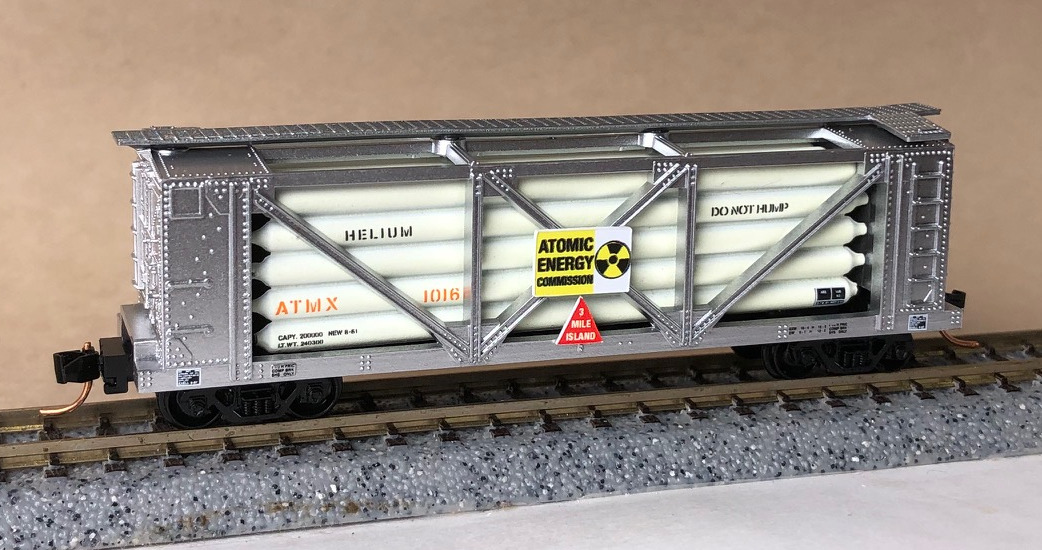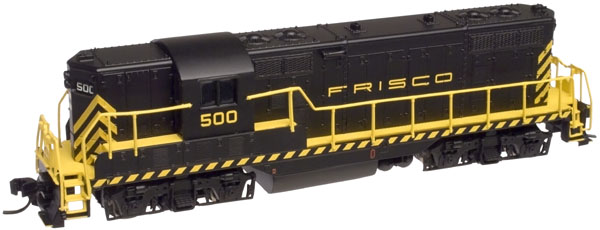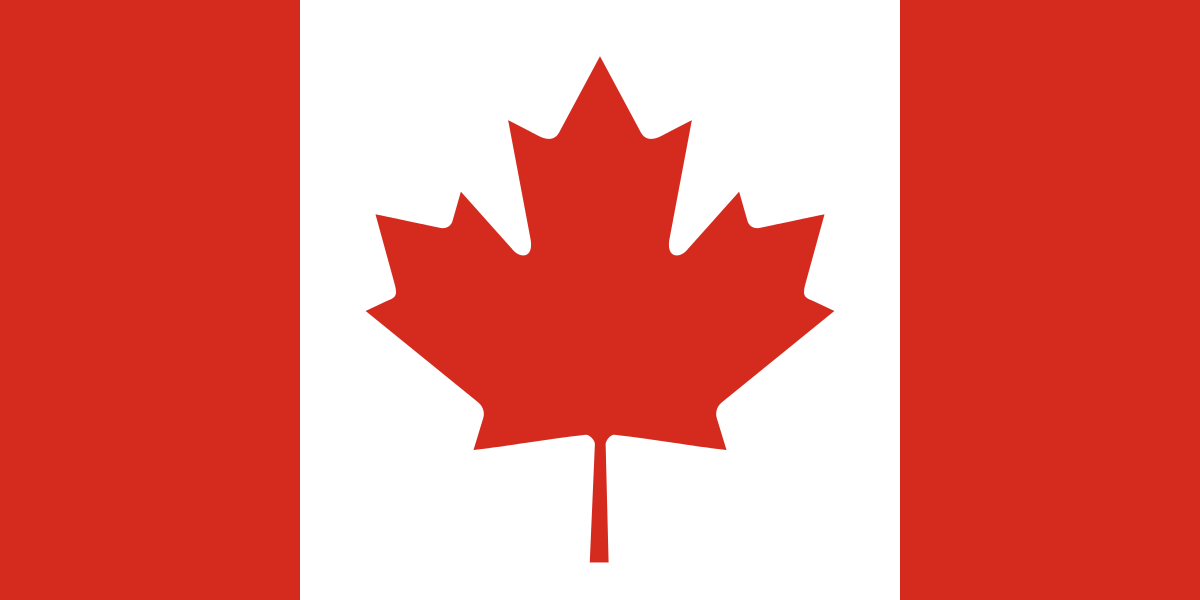Company History: The TH&B was chartered in 1884 to connect Hamilton, Ontario to Fort Erie, just across the border from Buffalo, New York. However, once construction commenced, the goals changed. Ultimately, the TH&B would run from Waterford east to Hamilton and Welland, Ontario. Two branches ran south from this line to reach the lake port cities of Port Cleburn and Port Maitland (both on Lake Erie.) Until 1932, TH&B ran a car ferry operation between Port Maitland and Ashtabula, Ohio. In total, the TH&B was 111 miles long, making it slightly shorter that Richmond Fredricksburg & Potomac. In 1895 ownership was split between Canadian Pacific and three of the New York Central Lines: Michigan Central, Canada Southern and New York Central. TH&B was an important carrier for heavy industries in the Hamilton, Ontario area.
The most modern steam power on the TH&B was a pair of 2-8-4 Berkshires (the only Berkshires on a Canadian railroad) and a pair of 4-6-4 Hudsons. Strangely, none of TH&B’s steamers were equipped with all-weather cabs which were so common in Canada. This may have been due to the influence of NYC’s mechanical department.
TH&B had completely dieselized by 1954: NW2: 4, SW9: 4, GP7: 7, GP9: 3. The three GP9’s were built with boilers for passenger service and with their air tanks mounted on the roof. The GP9’s were also built to run long-hood-forward unlike the GP7’s. This often led to consists that appeared to have the locomotives “elephant walking” when in fact they were running back to back. One of the GP7’s was destroyed in a wreck in 1980. The roster then remained the same until the end. They also never really changed their paint scheme (except for adding the logo to the cab side around 1970.)
New York Central’s share of TH&B passed to Penn Central in that merger. After the collapse of PC and the creation of Conrail, CP Rail picked up PC’s share of the TH&B in 1977. However, TH&B remained a separate railroad for another 10 years until being merged into CPR.
The most modern steam power on the TH&B was a pair of 2-8-4 Berkshires (the only Berkshires on a Canadian railroad) and a pair of 4-6-4 Hudsons. Strangely, none of TH&B’s steamers were equipped with all-weather cabs which were so common in Canada. This may have been due to the influence of NYC’s mechanical department.
TH&B had completely dieselized by 1954: NW2: 4, SW9: 4, GP7: 7, GP9: 3. The three GP9’s were built with boilers for passenger service and with their air tanks mounted on the roof. The GP9’s were also built to run long-hood-forward unlike the GP7’s. This often led to consists that appeared to have the locomotives “elephant walking” when in fact they were running back to back. One of the GP7’s was destroyed in a wreck in 1980. The roster then remained the same until the end. They also never really changed their paint scheme (except for adding the logo to the cab side around 1970.)
New York Central’s share of TH&B passed to Penn Central in that merger. After the collapse of PC and the creation of Conrail, CP Rail picked up PC’s share of the TH&B in 1977. However, TH&B remained a separate railroad for another 10 years until being merged into CPR.
Successor/Parent History: The Canadian Pacific Railway (CPR), formerly also known as CP Rail (reporting mark CP) between 1968 and 1996, is a historic Canadian Class I railroad incorporated in 1881. The railroad is owned by Canadian Pacific Railway Limited (TSX: CP, NYSE: CP), which began operations as legal owner in a corporate restructuring in 2001.
Headquartered in Calgary, Alberta, it owns approximately 23,000 kilometres (14,000 mi) of track all across Canada and into the United States, stretching from Montreal to Vancouver, and as far north as Edmonton. Its rail network also serves major cities in the United States, such as Minneapolis, Milwaukee, Detroit, Chicago, and New York City.
The railway was originally built between Eastern Canada and British Columbia between 1881 and 1885 (connecting with Ottawa Valley and Georgian Bay area lines built earlier), fulfilling a promise extended to British Columbia when it entered Confederation in 1871. It was Canada's first transcontinental railway, but currently does not reach the Atlantic coast. Primarily a freight railway, the CPR was for decades the only practical means of long-distance passenger transport in most regions of Canada, and was instrumental in the settlement and development of Western Canada. The CP became one of the largest and most powerful companies in Canada, a position it held as late as 1975. Its primary passenger services were eliminated in 1986, after being assumed by Via Rail Canada in 1978. A beaver was chosen as the railway's logo because it is the national symbol of Canada and was seen as representing the hardworking character of the company.
The company acquired two American lines in 2009: the Dakota, Minnesota and Eastern Railroad and the Iowa, Chicago and Eastern Railroad. The trackage of the ICE was at one time part of CP subsidiary Soo Line and predecessor line The Milwaukee Road. The combined DME/ICE system spanned North Dakota, South Dakota, Minnesota, Wisconsin, Nebraska and Iowa, as well as two short stretches into two other states, which included a line to Kansas City, Missouri, and a line to Chicago, Illinois, and regulatory approval to build a line into the Powder River Basin of Wyoming. It is publicly traded on both the Toronto Stock Exchange and the New York Stock Exchange under the ticker CP. Its U.S. headquarters are in Minneapolis.
After close of markets on November 17, 2015, CP announced an offer to purchase all outstanding shares of Norfolk Southern Railway, at a price in excess of the US$26 billion capitalization of the United States-based railway. If completed, this merger of the second and fourth oldest Class I railroads in North America would have formed the largest single railway company on that continent, reaching from the Pacific coast to the Atlantic coast to the Gulf Coast. The merger effort was abandoned by Canadian Pacific on April 11, 2016, after three offers were rejected by the Norfolk Southern board.
Read more on Wikipedia and on Canadian Pacific official website.
Headquartered in Calgary, Alberta, it owns approximately 23,000 kilometres (14,000 mi) of track all across Canada and into the United States, stretching from Montreal to Vancouver, and as far north as Edmonton. Its rail network also serves major cities in the United States, such as Minneapolis, Milwaukee, Detroit, Chicago, and New York City.
The railway was originally built between Eastern Canada and British Columbia between 1881 and 1885 (connecting with Ottawa Valley and Georgian Bay area lines built earlier), fulfilling a promise extended to British Columbia when it entered Confederation in 1871. It was Canada's first transcontinental railway, but currently does not reach the Atlantic coast. Primarily a freight railway, the CPR was for decades the only practical means of long-distance passenger transport in most regions of Canada, and was instrumental in the settlement and development of Western Canada. The CP became one of the largest and most powerful companies in Canada, a position it held as late as 1975. Its primary passenger services were eliminated in 1986, after being assumed by Via Rail Canada in 1978. A beaver was chosen as the railway's logo because it is the national symbol of Canada and was seen as representing the hardworking character of the company.
The company acquired two American lines in 2009: the Dakota, Minnesota and Eastern Railroad and the Iowa, Chicago and Eastern Railroad. The trackage of the ICE was at one time part of CP subsidiary Soo Line and predecessor line The Milwaukee Road. The combined DME/ICE system spanned North Dakota, South Dakota, Minnesota, Wisconsin, Nebraska and Iowa, as well as two short stretches into two other states, which included a line to Kansas City, Missouri, and a line to Chicago, Illinois, and regulatory approval to build a line into the Powder River Basin of Wyoming. It is publicly traded on both the Toronto Stock Exchange and the New York Stock Exchange under the ticker CP. Its U.S. headquarters are in Minneapolis.
After close of markets on November 17, 2015, CP announced an offer to purchase all outstanding shares of Norfolk Southern Railway, at a price in excess of the US$26 billion capitalization of the United States-based railway. If completed, this merger of the second and fourth oldest Class I railroads in North America would have formed the largest single railway company on that continent, reaching from the Pacific coast to the Atlantic coast to the Gulf Coast. The merger effort was abandoned by Canadian Pacific on April 11, 2016, after three offers were rejected by the Norfolk Southern board.
Read more on Wikipedia and on Canadian Pacific official website.
Brief History: Canada is a North American country stretching from the U.S. in the south to the Arctic Circle in the north. Major cities include massive Toronto, west coast film centre Vancouver, French-speaking Montréal and Québec City, and capital city Ottawa. Canada's vast swaths of wilderness include lake-filled Banff National Park in the Rocky Mountains. It's also home to Niagara Falls, a famous group of massive waterfalls.
Item Links: We found: 2 different collections associated with Toronto Hamilton & Buffalo - Railroad
- Collection N Scale Model Trains: 73 different items.
- Collection Z Scale Trains: 6 different items.
Item created by: gdm on 2017-10-10 09:58:51. Last edited by gdm on 2022-03-25 09:41:29
If you see errors or missing data in this entry, please feel free to log in and edit it. Anyone with a Gmail account can log in instantly.
If you see errors or missing data in this entry, please feel free to log in and edit it. Anyone with a Gmail account can log in instantly.










